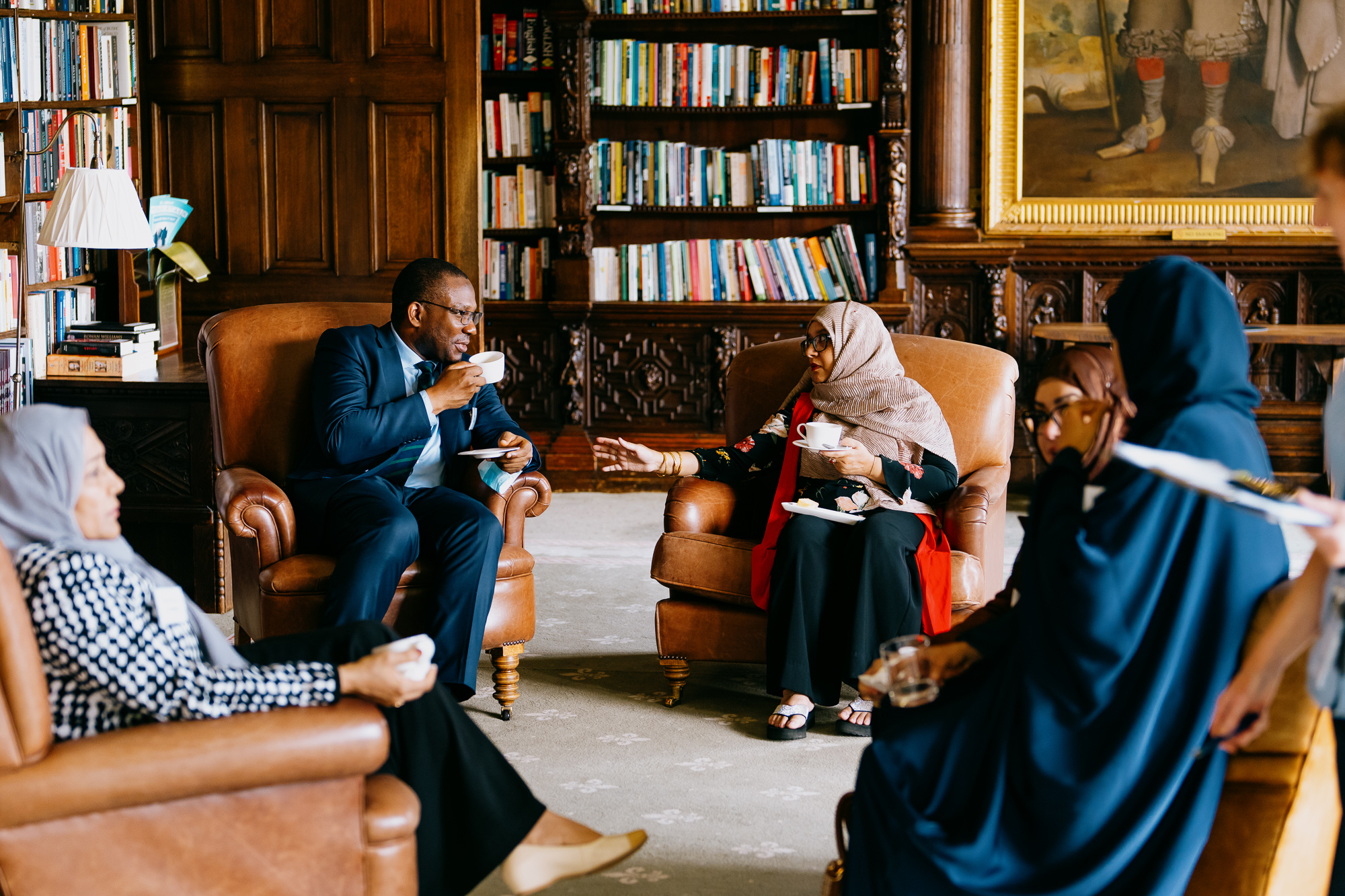
The richness and breadth of the discussions was very impressive and what we have tried to capture in this report is the key points which came out. There were many similar themes which kept coming to the fore as well as some uncertainty about how to move forward. Because the residential meeting offered a safe, confidential space for exchange, delegates were able to move away from mere rhetoric and be more candid and honest with their interventions. The breakout groups also helped to enable smaller groups to explore certain themes in more depth.
The key points that came out of the discussions were around the importance of identifying tangible actions to amplify the voice of women leaders, more fully engage women of faith, and forge collaboration among them and between them and other stakeholder groups.
Why women? Climate Change has a woman’s face
During periods of conflict, climate change impacts, and forced migration, women, children and indigenous groups are disproportionately exposed to the most vulnerable and adverse consequences. The UN estimates that 80% of those displaced by the effects of climate change are women and the importance of their voices and recognition of their work is crucial to combating climate change.[1]
The UNFCCC highlighted the pivotal contribution that women can make in addressing climate change, given their expertise in local knowledge and sustainable resource management. Recent research by the Georgetown Institute for Women, Peace and Security indicates that women have the potential to contribute to more sustainable peace, and their leadership has resulted in enhanced outcomes in the realm of climate action . [2]
-
“Climate change is impacting vulnerable populations; it is especially hurting women the most.” – Dr. Ibrahim Al Naimi
4.1.Tangible actions
The goal of the event was to find new ways to go beyond the boundaries of our constituencies and projects and amplify each other and encourage and advocate for mass mobilisation for climate action.
Mary Robinson kicked off the event by calling participants to urgent specific action. Project Dandelion, presented by Mary Robinson at the meeting, is an example of how engaging women leaders can lay the foundation for a mass mobilisation of women from all walks of life including the faith and secular worlds advocating for climate action.
The representatives from the Qatar Government were also able to present their work on Qatar’s National Environmental initiatives, demonstrating the importance of women’s leadership.
A substantial range of climate action is being undertaken within religious groups, but it is clearly not enough. Efforts are often siloed, and this conference aimed to highlight how to best bridge the divide.
What are the transformational solutions we would like to see? How can we scale up on projects to move further and faster with a focus on concrete action?
The participants proposed the following tangible actions to push women leadership faster, further in the climate change space:
- TRAINING: Importance of training and mentorship for young people to build the next generation of leaders.
- CAPACITY-BUILDING: Faith and inter-faith institutions to be empowered and capacitybuilt on climate change issues.
- MAINSTREAMING AND EMPOWERMENT OF WOMEN AT ALL LEVELS: Strengthening role of women at all levels – engaging women leaders in building resilient communities and nations through the inclusion and empowerment of women.
- ROLE MODELS AND REPRESENTATION: Examples of inclusion of women in leadership were given and also the importance of having decision-making powers rather than a token presence.
- KNOWLEDGE-SHARING: The importance of knowledge sharing on climate issues and promoting intergenerational inclusion – elders and youth.
- CREATION OF MEDIA NETWORK: Developing a media network to connect faith groups and climate-action groups – collaboration to promote messaging and campaigns. Media has an important role to play, especially in attracting & engaging with younger audiences looking for solutions to our planetary crisis issues.
- CREATING AND GIVING SPACE FOR A NEW NARRATIVE: Importance of storytelling and providing a platform to marginalised voices – women, women and faith, female indigenous leaders.
- CREATE A MASS COMMUNICATION CAMPAIGN: Pursuing this through networks of female representatives of faith with simple and powerful messaging.
- REPOSITORY OF RESOURCES: Access to case studies would be important for a leadership programme. Coordinate to simplify resources on issues and solutions to make it accessible – highlighting of efforts, filling education gap on issues around climate change.
- MAPPING EXERCISE: Mapping of the landscape of the religious environmental field. In the past decade, there has been the proliferation of faith-based efforts on the environment without learning from the past and strengthening work. Identification of gaps and opportunities is key.
- DEVELOPMENT OF COALITION/PLATFORM: Defining terms, language, value proposition and what we are working towards – climate action, biodiversity loss, stewardship, women empowerment etc.
- DEVELOP POLICY: A statement about the importance of women’s leadership in promoting climate action and climate justice would be important. Participants were encouraged to push for the implementation of the Convention on Biodiversity framework [CBD], adopted in Montreal in 2022.
[1]. OHCHR, https://www.ohchr.org/en/stories/2022/07/climate-change-exacerbates-violence-against-women-and-girls
[2] The Climate-Gender Conflict Nexus Amplifying women’s contributions at the grassroots; Georgetown Institute for Women, Peace and Security https://giwps.georgetown.edu/wp-content/uploads/2021/01/The-Climate-Gender-Conflict-Nexus.pdf
